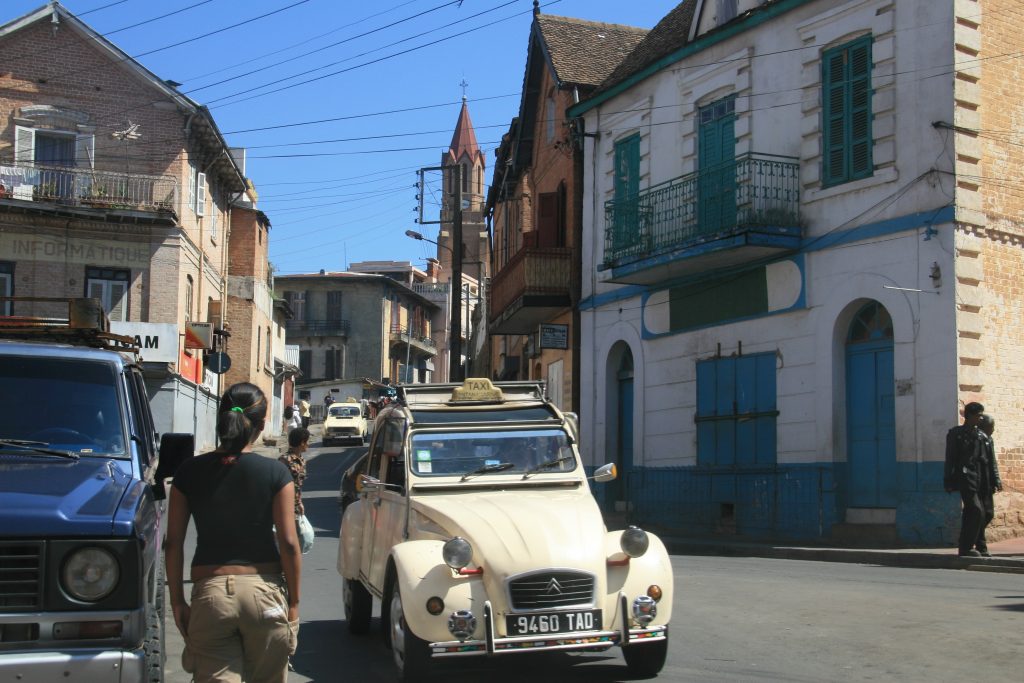
MADAGASCAR
In Madagascar, unlike other African countries I have lived or visited, humans can not be prey. There are no lions, crocodiles or leopards, obviously not even venomous snakes. But the fauna on the world’s fourth-largest island is said to be spectacular, too: 80% of Madagascar’s animals do not exist anywhere else. Unfortunately I did not come for all this when I visited in 2006. But at least I had a weekend to explore Tana, as its capital Antananarivo is affectionately called. I went up and down between haute ville and ville basse, climbing and descending its hilly, labyrinthine streets full of old 2CVs and decaying French colonial architecture, browsed its chaotic markets, and discovered paddy fields in the middle of urban fray and a fishermen in a dugout canoe on a tranquil city lake. To crown my exhausting walks I visited the reconstructed royal palaces of two kingdoms long gone. And I discovered that Tana was a great foodie city: I tried Mosakiky, skewers of zebu meat, and huge prawns in coconut sauce.
Neither the food nor the people felt exclusively African. I even felt that some faces of locals seemed more Polynesian than African. Both was easy to explain since tribes formed from early Austronesian settlers from where is now Indonesia and from Bantu people from mainland Africa. Some of Madgascar’s inhabitants are freaks — a giant moth with a tongue as long as a table fork for example, or a mouse lemur so small it can fit inside a teacup. I have to come back to this great splinter of Gondwana to meet these freaks, between rugged highlands and turquoise coasts, between desert and lush rainforest. Apart from my long-cherished epic journey on the Congo from Kisangani to Kinshasa, Madagascar will be my greatest adventure I have not experienced yet in Africa.
